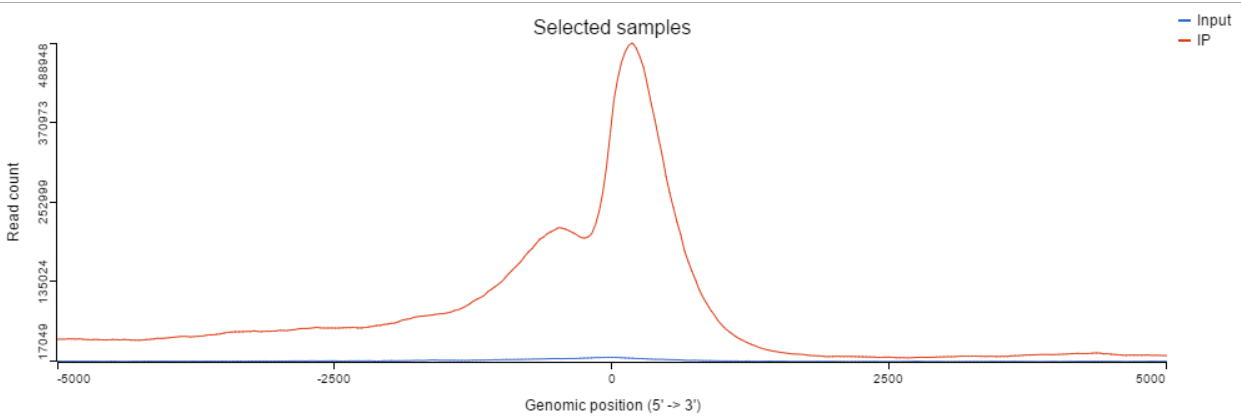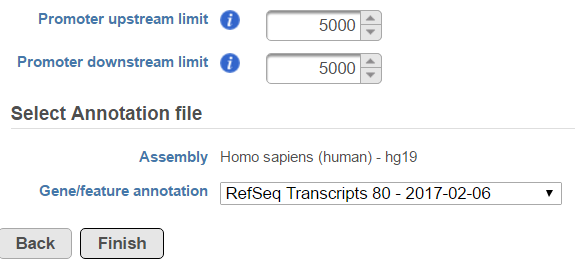Page History
The transcription start site plot (TSS plot is available on ) displays the number of reads that map around the transcription start site of genes within defined regions, such as peaks called during ChIP-seq experiments. This visualization can help identify patterns of chromatin, transcription factor and other protein binding sites along this stretch of the DNA.
You can invoke the creation of the plot on the annotated peak data node. After the peaks are annotated with transcripts, coverage of the reads across the genes overlapped with the regions will be calculated, this information is presented by profile plot (Figure 1) and heatmap (Figure 4).
| Table of Contents | ||||||
|---|---|---|---|---|---|---|
|
| Numbered figure captions | ||||
|---|---|---|---|---|
| ||||
TSS profile plot
In the profile plot, the Y-axis is the total read counts, X-axis is the window defined in the annotation annotation task, mid point is the transcription start site (TSS) of all the genes overlapped overlapping with the peak regions, the start and end point of X-axis is defined by the promoter upstream/downstream limit specified in the annotate peaks task (Figure 2). Each line represents a selected sample total read counts at each position, all the selected samples are shown in the plot to compare.
| Numbered figure captions | ||||
|---|---|---|---|---|
| ||||
| Numbered figure captions | ||||
|---|---|---|---|---|
| ||||
TSS heatmap
Heatmap The heatmap is another way to view the coverage of overlap between the gene body overlapped with the and peaks detected (Figure 4). The X-axis represents the same information as the profile plot, actually each samples profile plot is display again on the top of the heatmap, the max on the . While the maximum value of the Y-axis are varies among different in different samples. In the heatmap, each row represents a gene, while the color represents encodes the total read count at each position , and the genes are sorted based on total read counts in descending order from the top to the bottom.
| Numbered figure captions | ||||
|---|---|---|---|---|
| ||||
The color and color scale on the heamap heatmap can be customized in using the control panel on the left (Figure 5). When increase You can change the number of heatmap heatmaps per row, it will decrease the heamap size; when change the with a higher number decreasing the heatmap size. For the heat map colors, changing the Low and High values , it will change the color scale on of the heatmap. You can also change the color of the profile line by selecting Customize sample colors.
| Numbered figure captions | ||||
|---|---|---|---|---|
| ||||
| Additional assistance |
|---|
|
| Rate Macro | ||
|---|---|---|
|





